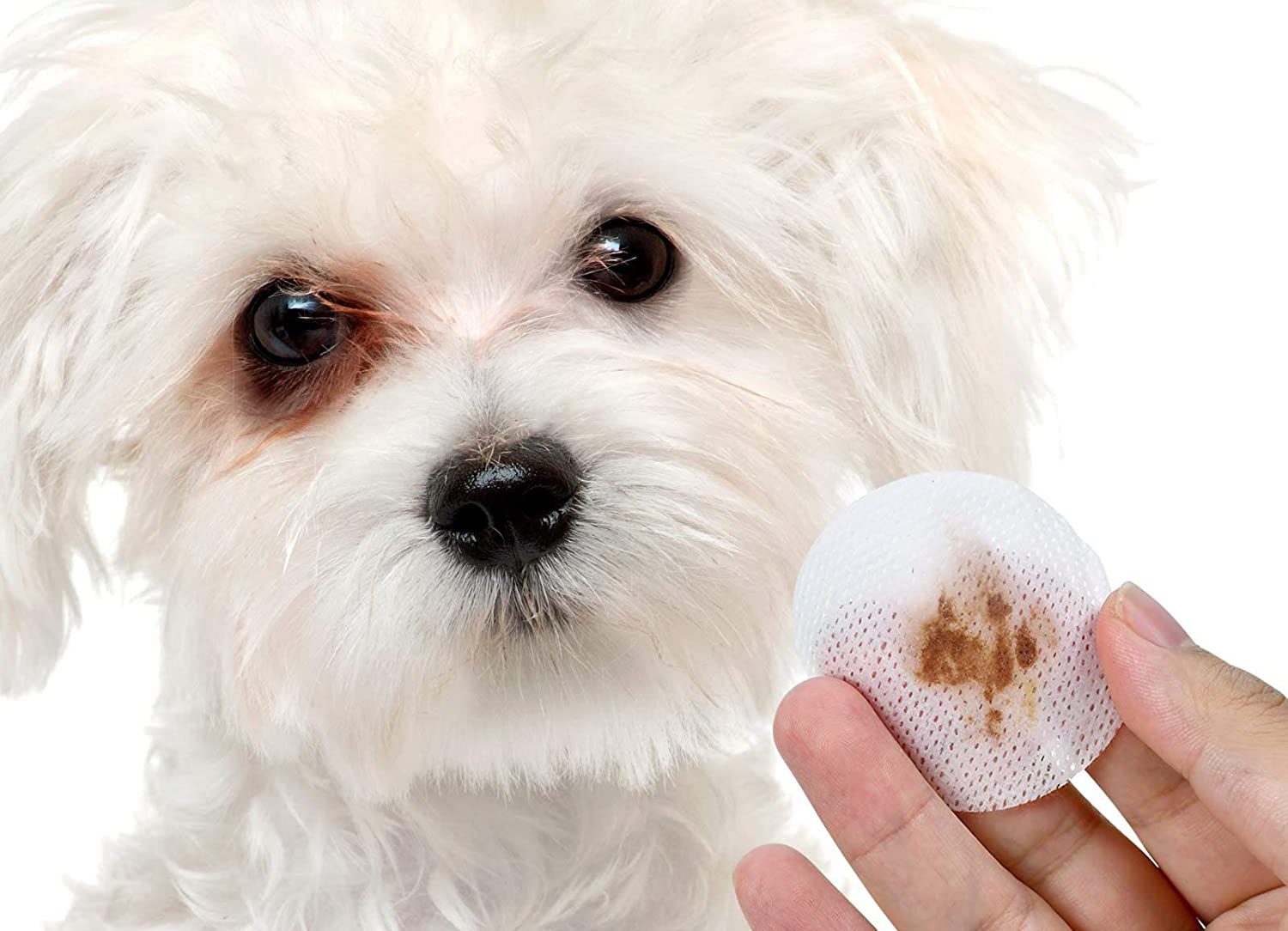Home>Health & Wellness>Common Health Issues>Urinary Health>How Do Dogs Get Urinary Crystals?


Urinary Health
How Do Dogs Get Urinary Crystals?
Published: February 16, 2024
Learn about urinary health in dogs and how urinary crystals develop. Discover tips for preventing and managing urinary issues in your pet. Find expert advice on maintaining your dog's urinary health.
(Many of the links in this article redirect to a specific reviewed product. Your purchase of these products through affiliate links helps to generate commission for Pawsomeoldies.com, at no extra cost. Learn more)
Table of Contents
Introduction
Urinary health is a crucial aspect of a dog's overall well-being. Just like humans, dogs can experience urinary issues, including the formation of urinary crystals. These microscopic crystals can develop in a dog's urinary tract, potentially leading to discomfort and health complications. Understanding the causes, symptoms, and preventive measures for urinary crystals is essential for every dog owner.
In this article, we will delve into the world of urinary crystals in dogs, shedding light on the factors that contribute to their formation, the breeds that are more susceptible, the symptoms to watch out for, and the steps to diagnose and treat this condition effectively. Furthermore, we will explore preventive strategies to help dog owners safeguard their furry companions from the discomfort and health risks associated with urinary crystals.
By gaining a deeper understanding of urinary crystals and their impact on dogs, pet owners can take proactive measures to promote their pets' urinary health and overall well-being. Let's embark on this insightful journey to unravel the mysteries of urinary crystals in dogs and equip ourselves with the knowledge to ensure the best possible care for our canine friends.
Read more: What To Feed A Dog With Urinary Crystals
What are Urinary Crystals?
Urinary crystals, also known as bladder stones or uroliths, are small, solid particles that form in a dog's urinary tract. These crystals are composed of minerals that are normally found in urine, such as calcium, struvite, oxalate, and urate. When the concentration of these minerals becomes too high or when there are imbalances in the urine's pH levels, crystals can precipitate and clump together, forming larger structures known as stones.
The formation of urinary crystals is a complex process influenced by various factors, including diet, hydration, and the overall health of the dog. Different types of crystals can develop based on the specific minerals involved. For instance, struvite crystals are commonly associated with urinary tract infections, while calcium oxalate crystals may form due to dietary factors and genetic predisposition.
These crystals can range in size from being microscopic to large enough to cause significant blockages in the urinary tract. When left untreated, urinary crystals can lead to discomfort, pain, and potentially severe health complications for the affected dog.
Understanding the composition and formation of urinary crystals is crucial for dog owners, as it enables them to recognize the significance of maintaining their pet's urinary health. By being aware of the factors that contribute to crystal formation, pet owners can take proactive measures to prevent this condition and ensure the well-being of their beloved canine companions.
Causes of Urinary Crystals in Dogs
Several factors can contribute to the formation of urinary crystals in dogs, ranging from dietary influences to underlying health conditions. Understanding these causes is essential for dog owners to take proactive steps in preventing the development of urinary crystals in their pets.
-
Dietary Factors: A dog's diet plays a significant role in the formation of urinary crystals. Diets that are high in certain minerals, such as calcium, phosphorus, and magnesium, can increase the likelihood of crystal formation. Additionally, imbalances in the pH levels of the urine, often influenced by diet, can create an environment conducive to crystal precipitation.
-
Dehydration: Inadequate water intake can lead to concentrated urine, which in turn promotes the formation of crystals. Dogs that do not have access to an ample supply of fresh water or those with a predisposition to low water consumption are at a higher risk of developing urinary crystals.
-
Urinary Tract Infections: Bacterial infections in the urinary tract can lead to the formation of struvite crystals. These infections create an environment where the minerals in the urine can crystallize, forming stones that can cause discomfort and potentially obstruct the urinary tract.
-
Genetic Predisposition: Certain breeds are genetically predisposed to developing specific types of urinary crystals. For example, Dalmatians are prone to forming urate crystals, while Miniature Schnauzers are more susceptible to calcium oxalate crystals. Understanding the breed-specific risks can help dog owners take preventive measures tailored to their pet's needs.
-
Underlying Health Conditions: Dogs with underlying health issues, such as kidney disease or metabolic disorders, may be more prone to developing urinary crystals. These conditions can affect the urinary system's function, leading to imbalances that contribute to crystal formation.
By addressing these underlying causes, dog owners can take proactive steps to mitigate the risk of urinary crystal formation in their pets. This may involve implementing a balanced diet, ensuring adequate hydration, and seeking veterinary care to address any underlying health issues that could predispose their dogs to this condition.
Breeds Prone to Urinary Crystals
Certain dog breeds are predisposed to developing urinary crystals due to genetic factors and breed-specific physiological characteristics. Understanding the breeds that are more susceptible to urinary crystals can help dog owners take proactive measures to safeguard their pets' urinary health.
-
Dalmatians: Dalmatians are known for their unique urinary system, which predisposes them to forming urate crystals. This breed has a genetic deficiency that affects the metabolism of uric acid, leading to the formation of urate crystals in the urinary tract. As a result, Dalmatians require special attention to their diet and hydration to minimize the risk of crystal formation.
-
Miniature Schnauzers: Miniature Schnauzers are prone to developing calcium oxalate crystals, which can contribute to the formation of urinary stones. This breed's predisposition to calcium oxalate crystals is influenced by genetic factors and specific dietary requirements. Maintaining a balanced diet and ensuring adequate hydration are crucial for managing the risk of crystal formation in Miniature Schnauzers.
-
Bichon Frises: Bichon Frises are susceptible to forming struvite crystals, often associated with urinary tract infections. This breed's tendency to develop struvite crystals underscores the importance of regular veterinary check-ups and proactive measures to prevent urinary tract infections. Additionally, dietary considerations play a vital role in managing the risk of crystal formation in Bichon Frises.
-
Yorkshire Terriers: Yorkshire Terriers are prone to developing calcium oxalate crystals, which can contribute to urinary stone formation. Genetic predisposition and specific dietary requirements make it essential for Yorkshire Terrier owners to be mindful of their pet's urinary health. Implementing a balanced diet and providing access to fresh water are crucial for minimizing the risk of crystal formation in this breed.
-
Shih Tzus: Shih Tzus have a predisposition to forming struvite crystals, often associated with urinary tract infections. This breed's susceptibility to urinary crystals highlights the importance of regular veterinary care and proactive measures to prevent and manage urinary tract infections. Dietary adjustments and adequate hydration are key factors in mitigating the risk of crystal formation in Shih Tzus.
By being aware of these breed-specific predispositions, dog owners can tailor their approach to urinary health management, incorporating targeted dietary strategies, regular veterinary monitoring, and proactive measures to ensure adequate hydration. Understanding the unique needs of these breeds empowers pet owners to take proactive steps in safeguarding their dogs from the discomfort and health risks associated with urinary crystals.
Symptoms of Urinary Crystals in Dogs
Recognizing the symptoms of urinary crystals in dogs is crucial for early detection and prompt intervention to prevent potential health complications. While some dogs may exhibit visible signs of discomfort, others may mask their symptoms, making it essential for pet owners to be vigilant and observant. Here are the common symptoms that may indicate the presence of urinary crystals in dogs:
-
Urinary Discomfort: Dogs with urinary crystals may experience discomfort or pain while urinating. They may exhibit signs of straining, whimpering, or vocalizing during urination, indicating potential irritation or obstruction in the urinary tract.
-
Frequent Urination: Increased frequency of urination, coupled with smaller urine volumes, can be a sign of urinary crystals. Dogs may need to urinate more frequently than usual, often in small amounts, as they experience discomfort associated with crystal formation.
-
Blood in Urine: The presence of blood in the urine, known as hematuria, is a concerning symptom that warrants immediate veterinary attention. Urinary crystals can cause irritation and inflammation in the urinary tract, leading to the appearance of blood in the urine.
-
Straining to Urinate: Dogs with urinary crystals may exhibit persistent attempts to urinate, even when only small amounts of urine are passed. This straining behavior is indicative of potential urinary tract obstruction or discomfort associated with crystal formation.
-
Lethargy and Discomfort: Dogs experiencing urinary discomfort due to crystals may display signs of lethargy, restlessness, or general discomfort. Changes in behavior, such as decreased activity levels or reluctance to engage in regular activities, can signal underlying urinary issues.
-
Excessive Licking of Genital Area: Dogs may excessively lick their genital area as a response to urinary discomfort. This behavior can indicate irritation or inflammation in the urinary tract, prompting dogs to seek relief through excessive grooming.
-
Accidents in the House: Dogs that are house-trained may exhibit urinary accidents indoors when experiencing discomfort associated with urinary crystals. Accidents, particularly in previously trained dogs, can serve as a red flag for potential urinary health issues.
-
Visible Signs of Distress: Dogs in significant discomfort due to urinary crystals may exhibit visible signs of distress, such as restlessness, pacing, or vocalization. These behaviors reflect the physical and emotional distress caused by urinary discomfort.
By being attentive to these symptoms, dog owners can promptly seek veterinary care if they suspect their pet may be experiencing urinary crystals. Early detection and intervention are crucial for effectively managing urinary crystals and preventing potential complications that could impact a dog's health and well-being.
Read more: Why Do Dogs Get Urinary Tract Infections?
Diagnosis and Treatment
Diagnosing urinary crystals in dogs typically involves a comprehensive approach that includes clinical evaluation, diagnostic tests, and tailored treatment strategies. When a dog exhibits symptoms indicative of urinary crystals, prompt veterinary intervention is essential to accurately diagnose the condition and initiate appropriate treatment. Here's a detailed overview of the diagnosis and treatment of urinary crystals in dogs:
Diagnosis
-
Physical Examination: The initial step in diagnosing urinary crystals involves a thorough physical examination by a veterinarian. This examination may include palpation of the abdomen to assess for any abnormalities or discomfort in the urinary tract area.
-
Urinalysis: A urinalysis is a fundamental diagnostic test that provides valuable insights into the dog's urinary health. It involves analyzing a urine sample to detect the presence of crystals, assess the urine's pH levels, and identify any signs of urinary tract infections or inflammation.
-
Imaging Studies: In cases where urinary stones are suspected, imaging studies such as X-rays or ultrasound may be conducted to visualize the urinary tract and identify the presence, size, and location of stones or crystals.
-
Blood Tests: Blood tests may be performed to evaluate the dog's overall health, assess kidney function, and identify any underlying conditions that could contribute to urinary crystal formation.
Treatment
-
Dietary Management: Tailoring the dog's diet to promote urinary health is a key aspect of treatment. Depending on the type of crystals present, a veterinarian may recommend a specialized prescription diet designed to dissolve specific types of crystals and prevent their recurrence.
-
Hydration: Ensuring adequate hydration is crucial for managing urinary crystals. Encouraging increased water intake and providing access to fresh water at all times can help dilute the urine and reduce the risk of crystal formation.
-
Medication: In cases where urinary crystals are associated with urinary tract infections or underlying health conditions, veterinarians may prescribe medications such as antibiotics or urinary acidifiers to address the underlying causes and promote urinary health.
-
Surgical Intervention: In instances where urinary stones are large or causing significant obstruction, surgical intervention may be necessary to remove the stones and alleviate urinary tract blockages.
-
Monitoring and Follow-Up: After initiating treatment, regular monitoring and follow-up appointments with the veterinarian are essential to assess the dog's response to treatment, monitor urinary health, and make any necessary adjustments to the treatment plan.
By employing a comprehensive approach to diagnosis and treatment, veterinarians can effectively address urinary crystals in dogs, alleviate discomfort, and mitigate the risk of potential complications associated with this condition. Pet owners play a crucial role in supporting the treatment process by adhering to veterinary recommendations, implementing dietary modifications, and providing attentive care to promote their dog's urinary health.
Prevention of Urinary Crystals in Dogs
Preventing urinary crystals in dogs is a proactive endeavor that encompasses various aspects of a dog's care, including diet, hydration, and regular veterinary monitoring. By implementing preventive measures, dog owners can significantly reduce the risk of urinary crystal formation and promote their pet's urinary health. Here's a comprehensive guide to preventing urinary crystals in dogs:
Read more: How Do Dogs Get Bladder Cancer
Balanced Diet
A balanced diet plays a pivotal role in preventing urinary crystals. Opting for high-quality commercial dog food or preparing homemade meals under veterinary guidance can help ensure that the dog's diet is well-balanced and tailored to promote urinary health. Specialized prescription diets designed to manage specific types of urinary crystals, such as struvite or calcium oxalate, can be recommended by veterinarians to minimize the risk of crystal formation.
Hydration
Maintaining adequate hydration is essential for preventing urinary crystals. Access to fresh, clean water should be readily available to encourage regular water intake. Dogs prone to low water consumption may benefit from wet food or water additives recommended by veterinarians to promote increased fluid intake and dilute the urine, reducing the likelihood of crystal formation.
Regular Exercise
Regular exercise contributes to overall health and can support urinary health in dogs. Physical activity helps maintain a healthy weight, promotes circulation, and encourages regular urination, which can aid in flushing out potential crystal-forming substances from the urinary tract.
Veterinary Monitoring
Regular veterinary check-ups are crucial for monitoring a dog's urinary health and identifying any early signs of urinary crystal formation. Veterinarians can conduct routine urinalysis, assess the dog's overall health, and provide tailored recommendations to support urinary health based on the dog's specific needs and predispositions.
Read more: How Do Indoor Dogs Get Fleas
Environmental Enrichment
Creating a stress-free and enriched environment for dogs can contribute to their overall well-being, including urinary health. Minimizing stressors, providing mental stimulation, and ensuring a comfortable living space can help reduce the risk of stress-related urinary issues that may contribute to crystal formation.
Education and Awareness
Dog owners can benefit from educating themselves about the specific needs of their dog's breed, including predispositions to urinary crystals. Understanding the breed-specific risks and requirements empowers pet owners to implement targeted preventive measures and make informed decisions regarding their dog's diet, hydration, and overall care.
By incorporating these preventive strategies into their dog's care routine, pet owners can take proactive steps to minimize the risk of urinary crystal formation and promote their pet's urinary health. Preventive measures, coupled with attentive care and regular veterinary guidance, can contribute to a happy, healthy life for dogs, free from the discomfort and health risks associated with urinary crystals.
Conclusion
In conclusion, understanding the complexities of urinary crystals in dogs is paramount for every pet owner. The formation of urinary crystals, influenced by dietary factors, hydration, genetic predispositions, and underlying health conditions, can pose significant risks to a dog's urinary health and overall well-being. Recognizing the symptoms of urinary crystals, such as urinary discomfort, frequent urination, and blood in the urine, empowers pet owners to seek timely veterinary care and intervention.
Furthermore, the breed-specific predispositions to urinary crystals highlight the importance of tailored preventive measures and targeted dietary strategies. Breeds such as Dalmatians, Miniature Schnauzers, Bichon Frises, Yorkshire Terriers, and Shih Tzus require specialized attention to their urinary health, emphasizing the need for breed-specific education and proactive care.
Diagnosing and treating urinary crystals in dogs involves a comprehensive approach, encompassing physical examinations, urinalysis, imaging studies, dietary management, hydration, medication, and surgical intervention when necessary. The collaborative efforts of pet owners and veterinarians are essential in addressing urinary crystals effectively and mitigating potential complications.
Preventive measures, including a balanced diet, adequate hydration, regular exercise, veterinary monitoring, and environmental enrichment, play a pivotal role in safeguarding a dog's urinary health. By incorporating these preventive strategies into their daily care routine, pet owners can take proactive steps to minimize the risk of urinary crystal formation and promote their pet's overall well-being.
Ultimately, the well-being of our canine companions hinges on our commitment to understanding, addressing, and preventing urinary crystals. By equipping ourselves with knowledge, remaining vigilant for potential symptoms, and implementing preventive measures, we can ensure that our beloved dogs lead healthy, comfortable lives, free from the discomfort and health risks associated with urinary crystals. Let's continue to prioritize our furry friends' urinary health, providing them with the care and attention they deserve.












